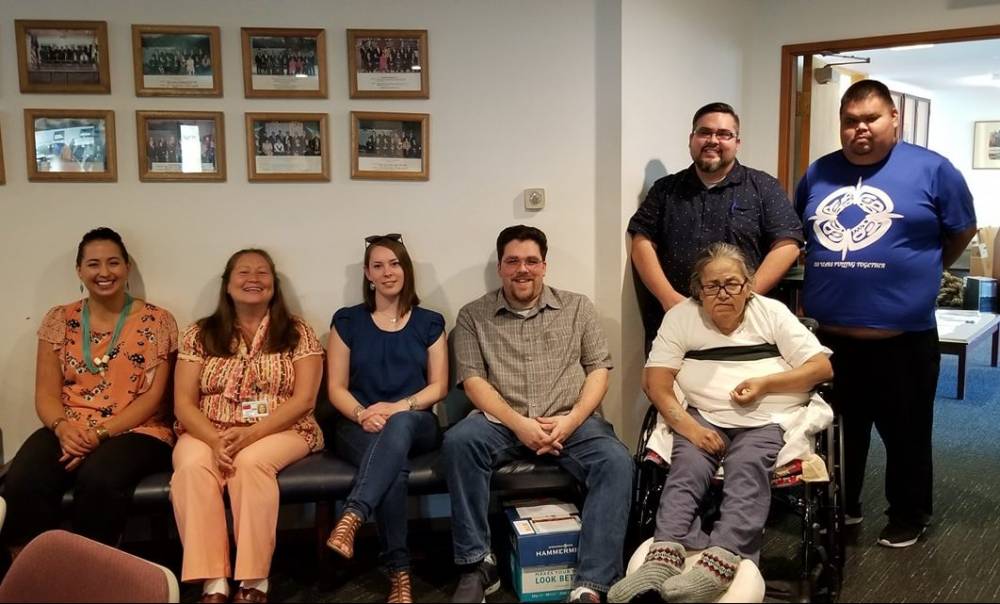An organization made up of Tsimshian language teachers and learners from across the state met in Metlakatla for the first time last night to raise awareness of Tsimshian language learning opportunities available online and in-person.
Mique’l Dangeli is one of the leaders of the Tsimshian Shimgit Heitgn Movement, also known as TSM, an organization with teachers in Ketchikan, Juneau, Anchorage and British Columbia.
Dangeli said TSM was formed last year to coordinate Tsimshian language efforts that were once disjointed around the state and Canada.
“I realized how segregated our efforts are, and I realized it wasn’t out of conflict or anything like that. It was just that we hadn’t come to a place of regular communication, conference or gathering to where we have an umbrella organization that we can use to strengthen our own work to produce speakers of our own language,” Dangeli said.
She said there have been disagreements in the past on who gets to learn the language, how the language is learned and how the language is pronounced. A part of the reason for the meeting in Metlakatla is to let people voice their opinions in an inclusive setting.
“Whether it’s ways of saying things, ways of teaching, to put all of that aside, to make our language as the focus and to model a regenerative, healthy, safe way of working together.”
TSM has held meetings in Anchorage and Juneau, which both have Tsimshian language learners groups. Metlakatla does not have a group. And Dangeli said she hopes the meeting inspires Metlakatla residents to create one.
David Boxley from the Hyaak Foundation, an organization in Metlakatla focused on Tsimshian language revitalization, spoke to the group in the Tsimshian language, Sm’algya̱x, about working together.
“Sm’algya̱x can save us as we save it. We don’t always have to agree with each other, but we should learn to respect one another,” Boxley said.
One of the speakers at the meeting was Terri Burr, a Tsimshian language facilitator at Ketchikan Indian Community. Burr said revitalizing the language is important not only for reviving culture but for the health of future Tsimshian generations.
“So it’s unity. It’s unity for people, our health, our language, our culture, our children. In trying to make sure our people are healthy, a big component of that is our language,” Burr said.
Burr said she is hopeful for the future with the large turnout the meeting had. Online learning materials shared at the meeting can be found here.









